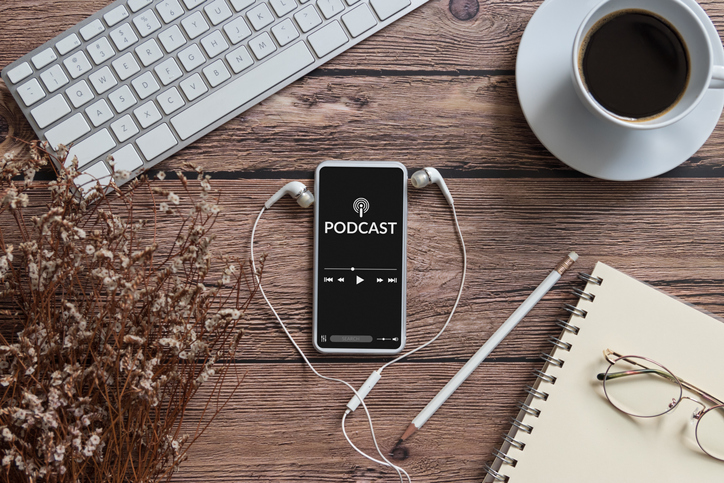Publishing Trends in 2020
This article is a write-up of a presentation by Philippe van Mastrigt, Director of European Operations at AdvantageCS at the 2020 European Users meeting.
The Covid Disruption
A year ago, who would have predicted the COVID crisis? This worldwide pandemic and the consequences of the first world-wide lockdown have impacted many industries, including publishing. For publishers, the impact has produced new challenges but has also had some positive effects.
First the good news: the pandemic has generated a huge demand for reliable news. This is a significant shift from the previous trend of decreased interest in information according to several polls done last year (for example, the one done by French daily La Croix in January 2020).
The first indicator of this was the boom in web traffic on news sites in March, which then slowly decreased over the following months. The INMA organization has been monitoring it from week to week, with the help of paywall software Piano. This pattern may have been common to all publishing segments, but with significant variations between national and local, and between different brands, too. An interesting observation is that local news brands that were on a declining pace before the pandemic have seen the biggest increase and are retaining more of their numbers. In France, regional newspaper publisher Ouest France passed national brands in traffic for the first time. On the other hand, specialized publishers like the Athletic had the biggest hurdles with so many sports events canceled, leaving them nothing to promote.
Subscriptions also bumped up as traffic increased. This happened not only for digital media but also various print segments, such as youth magazines and indoor/leisure content. Digital subscriptions had to maneuver through changing policies among publishers, many of whom pulled their paywalls down at first and then later re-established them to collect at least some revenue during this period. This strategy has largely been implemented through heavily discounted offers, with hopes for high conversion rates in the future.
The real drama has been in advertising, as the lock-down canceled current campaigns and prevented many new ones. This happened not only for print but also for digital, despite the bump in traffic, because many advertisers put a block on the word “COVID.” In March and April, advertising fell 40 to 50%, and for some daily newspapers, such as the Los Angeles Times, it completely dried up. On a side note, the remaining digital ads have triggered the reappearance of desktop display advertising, in response to fewer people commuting and traveling, reducing mobile use.
Besides advertising, other revenue streams such as events and travel have been hit, too. These two revenue sources had become major contributors for many publishers, such as French publisher Le Figaro, where travel accounts for 20% of revenue.
Ecommerce took a different path. At the start of the pandemic, it dropped by 50% in some countries, mainly because travel and tourism had been a significant portion of it. But over time, it did come back, and specifically for publishers, the business did well over the following months. Last but not least, podcast activity was also negatively impacted, due to the reduction of its most popular times of usage---commuting and walking.
What did publishers do when faced with this disruptive situation? They produced fewer editions, reduced sports and travel content and added coverage of topics related to the pandemic and lockdown. Cost-cutting has been another result. The Poynter study in the US showed that some daily newspapers stopped or suspended their print editions, or reduced their frequency, and also reduced their staff. Only magazines retained their print editions, as their digital business is not as strong as that of daily newspapers and print represents the largest contribution to revenue. Their response has been mainly personnel layoffs.
Digital subscription growth acceleration

The New York Times---the iconic index of the digital transition---has added 2 million additional digital subscriptions in one year for a total of 6.5 million at the end of the second quarter 2020. Its goal to reach 10 million in 2025 remains achievable with a curve that continues to accelerate since the 2011 launch of their paywall. Verticals such as crosswords and cooking have made a significant contribution to this success.
2020 is a tipping point as several historic players are close to achieving more revenue from digital subscriptions and advertising than from print for the first time, including The New York Times. For Le Monde in France, digital increased more than 50% in a year, from 200,000 to 300,000 digital subs, and the goal is 1 million.
Although print is still the biggest contributor of revenue, digital subs revenue is approaching that of print.
Magazines have not experienced the same success with digital as daily newspapers have, but some are seeing significant increases. In one year, The Atlantic built a portfolio of 300,000 digitals subs (two-thirds of which are in combination with print), and in France, weekly Courrier International has 1/3 of its circulation online. In any case, reader revenue remains the primary target for publishers, even if a significant number of them still depend on advertising. Among pure-digital players, several brands have successfully pivoted to subscriptions, such as Business Insider with its 1 million active subscribers.
Publishers are getting better at building paid readership and the COVID pandemic has shown that engagement is the key to conversion. Frequency tools such as verticals and newsletters are key. This strategy goes along with shifts in models. Nearly half of paywall models currently use the freemium approach, and dailies such as French Les Echos switched to it from their previous metered paywall. And for those that are Freemium, the % of content behind the wall continues to grow. Le Figaro in France started with 25% a couple of years ago and is now at more than 40%.
Challenges remain in the digital arena
Meanwhile, challenges haven’t disappeared. For local newspapers, digital is not a savior. Growth is limited by the geographic area, and digital exposes them both to competition from national brands and plagiarism from local competitors. And the limited volume doesn’t enable fine-tuned paywall strategies. For magazines, digital is not an escape hatch. Circulation continues to drop, having decreased 50% in 20 years. And when it comes to publishing revenue in general, including The New York Times, the increase in subscription revenue has not been enough to offset the collapse of advertising, which is falling faster than subscriptions are growing and has not yet hit bottom.
Therefore, it is not surprising that industry restructuring continues. During 2020, there were several mergers and take-overs, such as Mediahuis with NDC, Disney France taken over by UHM, Rossel purchasing Paris Normandie and Gannett merging with Gatehouse Media. Among aggregators, the same occurred. Blendle, the iconic Dutch start-up, abandoned its pay-per-article model last year, and has been purchased by Cafeyn. Private Equity is also active with British Archant purchased by RCapital, and Alden Capital – the “thanos of newspapers” – investing in Tribune. Nevertheless, Warren Buffet left the industry during the same year, explaining that he does not see any long-term solution for regional newspapers.
The countdown for print?
During the Covid lockdown, a significant number of American newspapers responded by halting their print editions. In Australia, Newscorp discontinued or moved about 100 newspapers to digital. In France, Le Monde des Religions magazine (25,000 circulation) was discontinued and converted into a vertical for Le Monde.
Some industry leaders openly declared the end of print, such as Mark Thompson from the New York Times and Alexandra Beverfjord from the Norwegian daily Aftenbladet. Both predict that print will survive until the model is no longer profitable, which could happen in a couple of years. However, that prediction is only for newspapers, not the magazine world.
There are downsides to this trend. At the INMA Media Subscriptions Week summit in New York in February 2020, Catarine Caravalho described how the elimination of print has been a loss for her Portuguese daily Dairo de Noticias. With the print edition gone, they lost a marketing tool, visibility and credibility.
In the print magazine world, there are still astonishing success stories, such as the French magazine So Society that published an in-depth investigation of a major crime story. The investigation took four years and the two issues published sold out and an additional 200,000 copies of each were reprinted. (They usually sell 50,000 copies.) Another example is the British Monocle, which is still only print with no digital edition. Generally speaking, print still provides the largest share of income.
The biggest threats to print are distribution and the decline in advertising. The newsstand network continues its collapse, and it is likely that postage will increase as volume drops.
The GAFA-Publisher battle hasn’t ended
In the copyright issue, the struggle continues after the EU adopted the copyright directive. French and German publishers have united to face Google in a battle for copyright money, and they have the support of national courts. In Australia, Google is threatening to stop Google news. Only Britain, in the face of Brexit, has abandoned the European regulation.
Facebook is more open to paying for content in Europe and is offering its new Facebook News tab there. However, it also threatens to close down publisher news on its social network in Australia.

An interesting trend is the number of publishers and media that have decided to distance themselves from Facebook and Google, such as Zetland in Denmark, which stopped promoting its content there, and the French national television that no longer offers the option to sign in with social network accounts. Generally speaking, numbers in the UK show that news consumption through social networks has declined.
There is also increasing pressure on advertising. Third-party cookies will end on Google Chrome in 2021 and Apple is drastically changing its IDFA tracker consent policy. Also, in the future, Chrome will block videos using too much bandwidth.
These changes have forced publishers to shift gears and reintroduce contextual targeting. It is a return to the old approach based on content that qualifies its readers and puts them in segments. Several media have shown promising numbers using this approach, such as the Dutch national broadcaster NPO and Reworld Media in France. GAFA are also facing challenges. Facebook has experienced advertising boycotts driven by hate speech issues. And Amazon is increasing its share in advertising budgets, challenging the two others on their own playground.
The last issue between GAFA players and publishers is subscriptions. Apple News+, which was launched in 2019, was not a success. Its high 50% commission rate and a bad user experience did not do much to convince publishers to join the service. The new Apple One subscription offer won’t really help either as only the highest tiers will offer access to Apple News+. Last, but not least with Apple, another front has been opened against its 30% commission on app sales, as it was disclosed that Kindle got preferred rates despite official talk that the commission was the same for all.
Relationships with Google are better. Its Subscribe with Google offer, combined with its low 5% rate, is increasingly convincing publishers such as the Mexican Reforma group and Le Monde in France to join the program.
Facebook is also subscription-friendly and has added a new Facebook News tab to its application. It will enable subscribers to continue to read content on Facebook while subscriptions are managed outside of the platform. This helps to accomplish the real goal: keeping the newsreaders on their platform, even when reading content from an outside subscription.
Publishers monetize through advertising (New York Times), conversion of younger audiences (The Economist) or as added value for subscribers only (Financial Times).
Meanwhile, news content from publishers remains a small segment of the total volume of podcasts and the break-even point before turning a profit is high (50,000 listeners). There is a real risk that although the publishers produce the content, the money is being made from it by the platforms that broadcast the content. That is the reason there are an increasing number of alliances with partnering companies, such as the Swedish Acast, specializing in podcast monetization.
Another hot topic is the winning platform. Apple has been passed by Spotify, which is increasing its investments in this format by acquiring various companies. Apple is trying to react but it has been hurt by the inflated numbers scandal that impacted its podcast broadcasting on the Apple watch. It is currently testing content production with Apple News today. But challengers always seem to appear and Amazon may be one, expanding its offerings both on its audible platform and within Amazon prime.

The audio frontier
Covid hasn’t slowed down podcasts and audio. Their volumes have reached impressive numbers (30 million available episodes), and large audiences (36% of Brits listen at least once a month, for example). The main revenue driver is still advertising (it doubles every year), and the phenomenon has expanded in multiple languages, with Brazil now the second-largest market.
Publishers are still focusing strongly on podcasts and the New York Times is once again a leader. It ranks number 3 in the world charts and acquired a couple of expert tech ecosystems (Serial and Audm).
What is the future looking like?
Predicting the future is not easy, but let’s try to envision it with these four statements:
- Covid reminds us that disruption can change the game in major ways. Therefore, publishers should continue to fight and reinvent their business to better compete. Trends can shift.
- Subscriptions remain, without any doubt, the foundation that should help in rebuilding the other businesses. Perhaps the way to get advertising back is to build a new model that leverages what subscriptions offer.
- Journalism and quality content remain the biggest assets, and as long as these are not given away, they remain strong cards to play.
- Those that do survive will have a better life, said Mark Thompson of the New York Times. So as time goes on and the weakest keep disappearing, there may be better times for those that are able to reinvent themselves and stay alive.